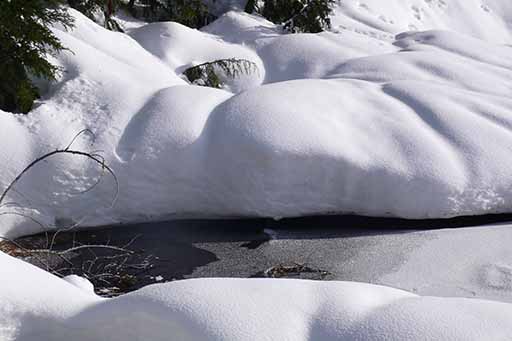Something to keep in mind…
~
[VIDEO]
.
‘This’ is, thanks to us wasting decades, piss farting around
.
at climate summits with non-binding emission targets,
…
while handing out subsidies to climate criminals, obstructing renewables,
…
and generally, not giving a shit that rising CO2 levels
…
are about to trigger what scientists call feedback loops.
…
Join
.
GLOBAL CLIMATE STRIKE
September 20-27
~
WORLDWIDE REBELLION
October 7-18
..
.

THE POLICIES OF BOLSONARO
~
Glenn Greenwald interview with Aaron Maté
(partial transcript)
One of the principal planks of the Bolsonaro campaign and of his ideology is this EXTREME FREE MARKETISM that, for example, prevailed in Chile after Pinochet succeeded in rising to power. And Bolosonaro’s economic guru Paulo Guedes has explicitly said that he wants to replicate what was done in Chile, in Brazil. He literally is from the Chicago School, not metaphorically. He went to the U. of Chicago and is very much in that tradition of privatizing and selling off and stripping down all public assets the way it was done in Chile to such great harm to the Chilean population.
A big part of Bolsonaro’s coalition … has overlooked the extent to which the agricultural industry [is involved].
The idea of aggressively deforesting the Amazon was something that was very much a part of Bolsonaro’s idealogy, as well as his contempt for the Indigenous tribes that have lived on that land for hundreds of years and who are often targeted with violence and murder when they try and protect their land from being taken over by miners or loggers or other industrial interests.
Bolsonaro has expressed all kinds of contempt for the Indigenous. He has stripped the agencies that are designed to protect the Amazon and the people who live there of almost all of their budget which has rendered these agencies essentially inoperable.
When you combine aggressive deforestation with the contempt for the Indigenous and the role that these agribusinesses played in his government, there is no question that the destruction of the Amazon, including by just sometimes lighting the Amazon on fire, is an outcome of his policies. There is no question that that ideology has played a key role in everything we are seeing.
[VIDEO]
Neocolonialism Will Spell the Amazon’s Demise
Truthdig 8-29-19
Jair Bolsonaro is effectively the G7’s guy. He and his Chicago School Economy minister Paulo Guedes are implementing an ultra-neoliberal economic platform from which Brazil is sold off for the price of a Banana. There should be no doubt about who the practical rather than rhetorical defenders of sovereignty are on the political spectrum. …
The G7’s cursory offer of $22 million US dollars is not money that Brazil actually needs, the country has $385 billion in reserves. …
It is not through oversight, incompetence or “failure to act” that the rainforest is in flames,
it is a deliberate, planned and genocidal deforestation strategy, from which G7 companies are themselves in line to benefit.
A leaked presentation by Washington DC lobbyists close to the Trump administration shows US companies being recruited to exploit the Amazon, from the Mining, Agribusiness and Gas/Chemical industries. A myriad of G7-based companies are already directly benefitting from the far-right Brazilian Government’s policies. Justin Trudeau will be unlikely to mention the Brazilian operations of Canada’s notorious Mining sector, and from the United States – Cargill, Monsanto, Boeing, Chevron, Exxon Mobil have all gained enormously from the post-Coup governments of Michel Temer and Jair Bolsonaro. There is even talk from Paulo Guedes to merge Banco do Brasil with Bank of America. …
These extreme talking points have at the very least revived a trope that “Brazil cannot be trusted as guardians of the Amazon”, and this now re-emerges in countries which actually, even actively supported the torching of Brazilian democracy. Right now, as the Amazon burns, progressive Democratic Members of Congress have requested clarification from the US Department of Justice’s on its role in Jair Bolsonaro’s rise to power.
In essence, do we really trust those who did nothing to help Brazil defend its democracy from fascism, foreign governments in the service of extractive corporations, or their think-tank lackeys, to protect the Amazon and its peoples?

HOT AIR NEWS ROUNDUP
If you read nothing else, read this…
Alaska’s Sea Ice Completely Melted for First Time in Recorded History
Truthout 9-3-19
Also for the first time in recorded history, Alaska’s sea ice has melted completely away. That means there was no sea ice whatsoever within 150 miles of its shores, according to the National Weather Service, as the northernmost state cooked under record-breaking heat through the summer. … A recent report from Canada warned that British Columbia could see “catastrophic” consequences from climate disruption-related events in the next three decades. These include more severe wildfire seasons, increasingly intense and longer heat waves, water shortages, and storm surges across the province. … Drought-induced blackouts are now besetting the people of Zimbabwe, where some places are seeing 18 hours per day without electricity. Imagine that in the summer heat. Dams providing hydropower lack water. Power blackouts are spreading. In Harare, Zimbabwe’s capital city, the taps have run dry, affecting more than 2 million people, who have been trying to cope with not having access to municipal drinking water. In India, a stunning 1 million people were displaced and at least 270 killed by severe flooding from heavier than usual monsoon rains.
Climate crisis: Rising sea levels and catastrophic storm surges could displace 280m people, UN warns
Independent 8-31-19
The damage caused by catastrophic “superstorms” combined with rising sea levels could increase by a hundred-fold or more, displacing hundreds of millions of people from coastlines around the world unless more is done to limit greenhouse gas emissions, according to a draft report by the United Nations. According to French news agency AFP, which said it had obtained a copy of the report, the document outlines a grim scenario in which the warming oceans are “poised to unleash misery on a global scale”, with declining fish stocks, the melting of sea ice and glaciers, and increasing levels of human displacement. Unless there are serious cuts to man-made greenhouse gas emissions, at least 30 per cent of the northern hemisphere’s surface permafrost could melt within just 80 years, the report warns.
Oceans turning from friend to foe, warns landmark UN climate report
PHYS ORG 8-29-19
Destructive changes already set in motion could see a steady decline in fish stocks, a hundred-fold or more increase in the damages caused by superstorms, and hundreds of millions of people displaced by rising seas, according to the Intergovernmental Panel on Climate Change (IPCC) “special report” on oceans and Earth’s frozen zones, known as the cryosphere. As the 21st century unfolds, melting glaciers will first give too much and then too little to billions who depend on them for fresh water, it finds.
Austerity-Obsessed Europe Could Combat Climate Change Without Raising Taxes
Truthout 9-2-19
Just to be clear, the European countries have been far better global citizens in this area than the United States. Their per-person emissions are roughly half as much as the United States. Furthermore, many European countries have already taken aggressive measures to promote clean energy and encourage conservation. … This is the context in which the concern for low budget deficits in these countries is utterly mindless. The financial markets are effectively begging these governments to borrow more money, but they refuse to do so. The need to address global warming makes this refusal especially painful. The fact that interest rates and inflation are so low indicates that these governments are needlessly sacrificing growth and jobs. That story is bad enough, but the picture is much worse when we consider the pressing need to address global warming. These governments could either pay directly to install solar and wind power, or provide large subsidies to businesses and homeowners. They could be subsidizing the switch to electric cars and making mass transit cheap or free, while they vastly ramp up capacity. They could also be providing large subsidies to countries in the global South to take the same measures, and to also save the rainforest in the Amazon.
Dorian Drives Home Warnings of Climate Influence on Hurricanes
Scientific American 9-3-19
Hurricane Dorian could be the fifth major storm to threaten the United States in three years, driving home scientists’ warnings that climate change is shaping powerful tropical systems. … As with Hurricane Harvey in 2017, Dorian’s eyewall stalled out for hours yesterday, exacerbating wind damage and severe flooding in the Bahamas. The storm’s erratic behavior was consistent with what scientists say future storms will look like in a warming climate. “The environment for all such storms has changed because of climate change,” Kevin Trenberth, a senior scientist with the National Center for Atmospheric Research’s Climate Analysis Section, said in an email. … Scientists have warned that hurricane intensity will rise over the next century as ocean waters warm, providing more energy to tropical systems as they move toward land. Research since 2017 has borne out such predictions, with larger, wetter and more destructive hurricanes occurring almost annually. … Dorian’s arrival renewed some of those concerns, particularly as it relates to FEMA. As of yesterday, the agency was assisting with 71 disasters and emergencies in 37 states and Puerto Rico. That means only 21% of FEMA’s 13,700-person emergency workforce is available for new deployments—the agency’s lowest level since 2017.
This was published last May but it is even more germane now…
The heat is on over the climate crisis. Only radical measures will work
The Guardian 5-18-19
Four degrees may not sound like much – after all, it is less than a typical temperature change between night and day. It might even sound pleasant, like retiring from the UK to southern Spain. However, an average heating of the entire globe by 4C would render the planet unrecognisable from anything humans have ever experienced. The last time the world was this hot was 15m years ago during the miocene, when intense volcanic eruptions in western North America emitted vast quantities of CO2. Sea levels rose some 40 metres higher than today and lush forests grew in Antarctica and the Arctic. However, that global heating took place over many thousands of years. Even at its most rapid, the rise in CO2 emissions occurred at a rate 1,000 times slower than ours has since the start of the Industrial Revolution. That gave animals and plants time to adapt to new conditions and, crucially, ecosystems had not been degraded by humans.
Chinese Belt and Road plan ‘may result in 2.7C warming’
Climate Change News 9-2-19
China’s multi-trillion dollar global investment plans could blow the 2C warming limit set by the Paris Agreement without curbs on pollution, a new study said on Monday. The 126 countries in the Belt and Road region now account for 28% of global emissions, but on their current trajectory, that could rise to 66% by 2050, researchers, led by Ma Jun, a special advisor to China’s central bank, said. That could mean global carbon levels would rise to nearly double the level needed to keep temperature increases to below 2C, a major goal of the Paris Agreement. “If B&RCs (Belt and Road countries) follow historical carbon-intense growth patterns… it may be enough to result in a 2.7 degree path, even if the rest of the world adheres to 2 degree levels of emissions,” the report said.
FIRES
Bolsonaro has issued a decree banning fires in the Amazon for 60 days. 60 days? This is a photo essay…
Bearing Witness as Brazil’s Amazon Burns
Time 9-1-19
There were at least 5,442 fires in Rondônia this August, according to statistics from INPE, Brazil’s space agency. That is up from 1,975 last year, echoing an Amazon-wide trend. In an area used to environmental destruction, Liste says the scale of the fires this year has taken locals and authorities by surprise. “Everyone is asking what is going on,” he says. The fires are not limited to private land but are also breaking out in protected areas, including the Jacundá National Forest in Rondônia. “All the national parks here are burning,” he says.
Brazil Bans Land-Clearing Fires For 60 Days To Stop Blazes, But Is It Too Late?
IFL Science 8-30-19
There are certain exceptions to the decree, such as fires authorized by environmental authorities for reasons relating to plant health, land clearing used to prevent the spread of wildfires, and fires used in traditional agriculture practices by indigenous people. Although the new decree won’t do much to stop illegal fires, it hopes to curtail the leading force behind the recent fires in the Amazon: deforestation. A senior scientist from Brazil’s National Institute for Space Research, which watches over and monitors the Amazon using satellites, told CNN that humans had started 99 percent of the fires on purpose or accidentally. In many of these instances, fire is used as a tool to clear land for the construction of infrastructure, new mines, or farmland.
Bolsonaro limits ban on fires in Brazil to Amazon only
ABC 8-30-19
The government on Friday published a decree saying fires for agriculture outside the Amazon region would be allowed with authorization from state environmental authorities. A day earlier, it published a ban on such fires nationwide in response to an international outcry over fires in the Amazon. Brazil’s National Space Research Institute says fires have increased about 80% in Brazil this year when compared to the same period last year. A little over half those fires are in the Amazon.
Brazil’s Amazon basin fires keep surging
AFP 8-31-19
In the first 48 hours since the ban was issued, satellite data from the National Space Research Institute (INPE) showed 3,859 new outbreaks of fire, of which some 2,000 were concentrated in the Amazon region. From January to the end of August, 51.9 percent of Brazil’s recorded 88,816 fires were in the rainforest, according to the INPE, a number experts call a dramatic, direct consequence of farmers’ widespread deforestation. Brazil’s Amazon region is in its dry season, but experts note that 2019 has been wetter than previous years — they also stress that there are no natural fires in the Amazon.
AP Explains: Role of the Amazon in global climate change
AP 8-27-19
The current fires in the Amazon are not wildfires. They are manmade and are mostly set illegally by landgrabbers who are clearing the forest for cattle ranching and crops. Deforesting the Amazon is a long, slow process. People clear the land by cutting down the vegetation during the rainy season, letting the trees dry out and burning them during the dry season. Fully clearing the dense forest for agricultural use can take several years of slashing and burning. “When I’m talking about 21st century deforestation, I don’t mean a family headed into the woods with a chainsaw,” said NASA researcher Doug Morton. “I mean tractors connected by large chains. They’re pulling trees out by their roots.” He said researchers could see piles of trees months ago in satellite images. “They’re burning an enormous bonfire of Amazon logs that have been piled, drying in the sun for several months.”
LEGISLATION, ELECTIONS & POLICY
A Southern Governor’s Climate and Clean Energy Plan Aims for Zero Emissions
Inside Climate News 8-30-19
What a difference three years can make in the politics of climate change in North Carolina, a state that not long ago took a sharp lurch to the right. After replacing a Republican who questioned whether climate change was caused by human activities, Democratic Gov. Roy Cooper has testified before Congress on North Carolina’s sizable climate challenges and unveiled a draft clean energy plan designed to put the state on a path toward eliminating carbon emissions from the power sector by mid-century.
How Trump’s trade wars are fueling the Amazon fires
The Guardian 9-1-19
Brazil is now the top exporter of soybeans to China – and that is leading to the rainforest being burned down at an extraordinary rate … Brazilian deforestation is no act of non-government organizations, as the president, Jair Bolsonaro – who called himself “Captain Chainsaw” – absurdly claimed. He ran for president last year exhorting homesteaders to stake their claim by cutting or burning. They scoff at scientists and outsiders alarmed that the planet could cook that much faster if the rain forest is torched, and have openly stated their goals shielded in sovereignty.
Major Climate Change Rules the Trump Administration Is Reversing
NYT 8-29-19
The move to rescind environmental rules governing emissions of methane, a powerful greenhouse gas, brings to 84 the total number of environmental rules that the Trump administration has worked to repeal. Officials at the White House, the Environmental Protection Agency and other agencies have called the regulations burdensome to the fossil fuel industry and other businesses. Half of those environmental rollback attempts, like the new methane reversal, will undercut efforts by previous administrations to reduce emissions and fight climate change.
Queensland extinguishes native title over Indigenous land to make way for Adani coalmine
The Guardian 8-31-19
The Queensland government has extinguished native title over 1,385 hectares of Wangan and Jagalingou country for the proposed Adani coalmine in Queensland’s Galilee Basin – without any public announcement of the decision. The decision could see Wangan and Jagalingou protesters forcibly removed by police from their traditional lands, including lands used for ceremonies. W&J Council leader Adrian Burragubba, and a group of Wangan and Jagalingou representatives, had been calling on the government to rule out transferring their land, arguing they had never given their consent for Adani to occupy their country.
BRICS was Created as a Tool of Attack, Says an Imprisoned Lula
Consortium 9-1-19
He emphasized: “BRICS [Brazil, Russia, India and China – that formed in 2006 and then included South Africa in their annual meetings from 2010.] was not created to be an instrument of defense, but to be an instrument of attack. So we could create our own currency to become independent from the US dollar in our trade relations; to create a development bank, which we did – but it is still too timid – to create something strong capable of helping the development of the poorest parts of the world.” Lula made an explicit reference to the United States’ fears about a new currency: “This was the logic behind BRICS, to do something different and not copy anybody. The US was very much afraid when I discussed a new currency and Obama called me, telling me, ‘Are you trying to create a new currency, a new euro?’ I said, ‘No, I’m just trying to get rid of the US dollar. I’m just trying not to be dependent.’”
One can imagine how this went down in Washington. Obama may have been trying to warn Lula that the US ‘Deep State’ would never allow BRICS to invest in a currency or basket of currencies to bypass the US dollar. Later on, Vladimir Putin and Erdogan would warn President Dilma – before she was impeached – that Brazil would be mercilessly targeted. In the end, the leadership of the Workers’ Party was caught totally unprepared by a conjunction of sophisticated hybrid-war techniques. … “What I had spoken about was the role of Brazil in the environmental question. I’ll get someone from the Workers’ Party to find this speech for you. The new trend in Brazil is to try to compare policies between myself and Bolsonaro. You cannot accept his line that NGOs are setting fire to the Amazon. Those burning the Amazon are his voters, businessmen, people with very bad blood, people who want to kill indigenous tribes, people who want to kill the poor.”
THE ARCTIC
Greenland’s ice faces melting ‘death sentence’
BBC 9-3-19
Greenland’s massive ice sheet may have melted by a record amount this year, scientists have warned. During this year alone, it lost enough ice to raise the average global sea level by more than a millimetre. Researchers say they’re “astounded” by the acceleration in melting and fear for the future of cities on coasts around the world. One glacier in southern Greenland has thinned by as much as 100 metres since I last filmed on it back in 2004.
Scientists and designers are proposing radical ways to ‘refreeze’ the Arctic
CNN 9-1-19
The idea, recently named runner-up in an international design competition appealing for radical approaches to sustainability, is the latest in a series of new proposals for “refreezing” the Earth’s poles — from sprinkling them with artificial sand to blasting seawater into the sky to brighten the clouds. … The process would begin with the submarine dipping beneath the surface to fill its central cavity with seawater. Salt would then be filtered out, raising water’s freezing point by more than 3 degrees Fahrenheit, after which a hatch closes over the chamber to protect it from the sun. An iceberg would then form naturally inside, before being ejected a month later. According to the team behind the project, the hexagonal shape may encourage the icebergs (or “ice babies” as Kotahatuhaha refers to them) to interlock with one another and form larger frozen masses.
It’s about the jet stream, again…
Deep snow cover in the Arctic region intensifies heat waves in Eurasia
PHYS ORG 9-30-19
Variations in the depth of snow cover in the Arctic region from late winter to spring determines the summer temperature pattern in Eurasia, according to Hokkaido University researchers. In particular, deeper-than-usual snow cover in Western Russia enhanced the likelihood of summer heat waves in Europe and Northeast Asia in recent years. Persistent abnormally hot weather can cause negative impacts on human health, agriculture, and natural environments. A heat wave—a spell of hot days with the mercury rising much higher than the average temperature—has been reported more frequently in Europe and Northeast Asia in recent years.
Russia discovers five islands as climate change melts Arctic ice
The Telegraph 8-28-19
A Russian naval expedition has discovered five Arctic islands as climate change melts glaciers and reveals landforms previously hidden under ice. Ranging in size from 900 to 54,500 square metres, the five tiny islands are located in the cove of Vize off the northeastern shore of Novaya Zemlya, which divides the Barents and Kar.
FOSSIL FUELS
There has been a huge increase of methane in the atmosphere since 2008. Here is the study mentioned in the video below…
Fracking prompts global spike in atmospheric methane, study suggests
Science Daily 9-15-19
As methane concentrations increase in the Earth’s atmosphere, chemical fingerprints point to a probable source: shale oil and gas, … The research suggests that this methane has less carbon-13 relative to carbon-12 (denoting the weight of the carbon atom at the centre of the methane molecule) than does methane from conventional natural gas and other fossil fuels such as coal. This carbon-13 signature means that since the use of high-volume hydraulic fracturing — commonly called fracking — shale gas has increased in its share of global natural gas production and has released more methane into the atmosphere, … “This recent increase in methane is massive,” Howarth said. “It’s globally significant. It’s contributed to some of the increase in global warming we’ve seen and shale gas is a major player.” “If we can stop pouring methane into the atmosphere, it will dissipate,” he said. “It goes away pretty quickly, compared to carbon dioxide. It’s the low-hanging fruit to slow global warming.”
Keiser Report: If you can’t stand the heat (E1431)
As methane concentrations increase in the Earth’s atmosphere, chemical fingerprints point to a probable source: shale oil and gas, according to new Cornell University research. … This carbon-13 signature means that since the use of high-volume hydraulic fracturing, shale gas has increased in its share of global natural gas production and has released more methane into the atmosphere.
Pipeline Permit Scandal Highlights Confusion Amid Push to Build Plastics Plants
Desmog 8-30-19
For the past 42 years, the Beaver County Conservation District in western Pennsylvania has hosted their Maple Syrup Festival, an annual all-you-can-eat pancake breakfast featuring syrup made from maple trees in a park in Beaver Falls. It’s a huge event in this county, population 164,742; organizers expected up to 40,000 attendees at last year’s festival, which included a Civil War re-enactment, pony rides, and craft demonstrations like bobbin lace making. But with the arrival of Shell and its $6 billion plastics manufacturing plant, currently under construction in Beaver County, the conservation district assumed more serious responsibilities than throwing a maple syrup festival — including permitting the fossil fuel pipelines feeding the massive plastics complex. That pipeline was built by Energy Transfer, builder of the Dakota Access pipeline. Its job was to carry so-called “wet” gas, a mix of hydrocarbons such as methane, propane, and ethane, from fracked gas wells in Pennsylvania to a plant where “dry gas” (also known as methane, the primary ingredient in natural gas) could be separated, leaving behind the natural gas liquids prized by the petrochemical and plastics industries. … The problem? The district had no legal authority to authorize the permit, which “should have been reviewed by DEP’s Oil and Gas Management program,” auditors wrote. The Revolution pipeline is considered a “gathering line,” which gathers gas from individual gas wells, and not a “transmission line,” which carries gas long distances, auditors wrote — and the district had no authority over gathering lines.
Trump EPA Tries Again to Roll Back Methane Rules for Oil and Gas Industry
Inside Climate News 8-30-19
The proposed rule change involves leaks of the potent greenhouse gas from new oil and gas wells, storage and pipelines. It also questions EPA’s own authority to act. In its latest retreat from federal action on climate change, the Trump administration on Thursday proposed eliminating federal requirements that oil and gas companies control leaks of methane, a potent greenhouse gas, from new wells, storage facilities and pipelines. In doing so, the Environmental Protection Agency also proposed a narrower interpretation of its legal authority to regulate air pollution from the oil and gas industry.
WEATHER
Niger battles deadly floods as city streets swamped
PHYS ORG 9-4-19
The disaster has already claimed 42 lives. Only 25,000 of the 70,000 people affected by the crisis have received aid, said Lawan Magadji, Niger’s minister for humanitarian affairs. Niger, one of the world’s poorest countries, is in the midst of its annual rainy season, which lasts three to four months over summer. At the start of the week, water rose to 6.38 metres (21 feet) in Niamey, levels “not seen in more than 50 years”, the city’s governor Assane Issaka Karanta said.
Climate change affects floods in Europe
Science Daily 8-28-19
For a long time, scientists argued whether or not climate change is affecting floods. No clear trends seemed to be evident. Now, in a major international study, data from numerous measurement stations all across Europe have been evaluated. The data clearly shows that climate change is indeed influencing the magnitude of flood events. However, climate change has different consequences in different regions.
Very good read…
How Amazon forest loss may affect water—and climate—far away
National Geographic 8-28-19
When Jair Bolsonaro, a 63-year-old retired Brazilian military officer, took the helm in January of a country that manages 1.5 million square miles of the Amazon, the risks to wildlife and indigenous tribal communities were hotly debated. With Bolsonaro’s plans, deforestation rates in Brazil could quickly triple, according to an assessment by scientists. … The forest also influences the water cycle on a regional and perhaps even global scale. As moisture comes off the Atlantic Ocean it falls on the forest as rain. This water gets sucked up by deep roots, then moves through plants and across the surface of leaves before returning to the atmosphere. Winds blowing over the uneven forest canopy create turbulence, which allows the atmosphere to absorb more moisture. All this water then moves like a giant flowing river in the sky, falling as rain and then evaporating again and again until it reaches the Andes. Ultimately, the forest produces at least half of its own rain. “One water vapor molecule may be recycled five to seven times before it leaves the system, either through the atmosphere or the Amazon River,” says Carlos Nobre, a climate scientist with the University of São Paulo’s Institute for Advanced Studies.
HEALTH
Australian Medical Association declares climate change a health emergency
The Guardian 9-3-19
The Australian Medical Association has formally declared climate change a health emergency, pointing to “clear scientific evidence indicating severe impacts for our patients and communities now and into the future”. The AMA’s landmark shift, delivered by a motion of the body’s federal council, brings the organisation into line with forward-leaning positions taken by the American Medical Association, the British Medical Association and Doctors for the Environment Australia. The American Medical Association and the American College of Physicians recognised climate change as a health emergency in June 2019, and the British Medical Association the following month declared a climate emergency and committed to campaign for carbon neutrality by 2030.

ADAPTION AND RESILIENCE
Pathways to a Clean Energy Future for the Northwest
Clean Energy Transition June 2019
The Clean Energy Transition Institute commissioned this study to understand how Idaho, Montana, Oregon, and Washington could technically and economically achieve a low-carbon economy over the next three decades.
Algae could be turned into climate-friendly food and fuel
Yale Climate Connections 9-2-19
“Currently companies in the industry are producing plastics, and recyclable foam, and animal feed for cows and chickens and pigs, and aquafeed for shrimp,” Mark Allen says. Allen is board chair of the Algae Biomass Organization, a trade group promoting the industry. He says financial costs have made it difficult to scale up algae production, but he expects that to change over time. “One of the most exciting things is the past year, in the 2018 farm bill, algae is now named as a commodity product,” he says.
Eco-sensitive community in northern India harvests rainwater
inhabitat 9-4-19
Envisioned as a nature retreat for city dwellers, the Woodside is perched on extremely steep terrain that includes level differences of approximately 100 meters within the site boundaries. To minimize energy usage, the cottages, which come in four different types, all feature thick outer walls to provide a thermal mass to reduce reliance on air conditioning. The community’s rainwater harvesting systems also help reduce water use. The collected water is used for irrigation or is stored in a sump downhill for later use.
New Hyundai Sonata Hybrid Goes 1,300km a Year on Its Solar Panel Alone
Green Optimist 8-23-19
A spokesperson from Hyundai even said that you could charge 30 to 60 percent of the hybrid battery with the solar panel, and that by exposing your car to 6 hours of full sunlight, you can go as far as 1,300km per year. Or about 3.5km per day. Which is some people’s commute to work. Not bad. However, in 2004 solar panels weren’t as exquisite as in 2019, but Toyota was way ahead of the game back then. Hyundai only plans to release their solar panel-equipped Sonata Hybrid in the US and South Korea, but not in Europe for the moment.
Vertical Forests, A Practical Design For Humanizing Cities Again
Green Prophet 9-4-19
What on earth is a vertical forest? It’s a forest that doesn’t grow on the earth. It grows in troughs placed on the balconies of residential buildings, hotels, and parks, making huge urban green spaces that don’t take up ground space, but rise skyward. Today’s overcrowded, denatured, polluted cities are only waiting for them. They are the brainchild of Italian architect and urban planner Stefano Boeri. Boeri’s office, Stefano Boeri Architetti, has already planted 27 vertical forests in cities around the world. Now Egypt has accepted plans for three seven-story forested buildings to be built in the New Administrative Capital.
It’s best not to fly to conferences
PHYS ORG 9-4-19
Department of Political Science at the University of Freiburg advocates a more conscious approach to such research trips. The political scientist examined the travel-related CO2 emissions of the last six conferences from the European Consortium for Political Research (ECPR). In addition to calculating the travel-related CO2 emissions of the conference participants, Jäckle is also investigating how emissions can be reduced. The study was published in the journal European Political Science. According to Jäckle’s calculations, the average CO2 balance of a conference visitor ranges from 0.5 to 1.5 tons of CO2 equivalents per three-day ECPR meeting. In comparison, every German emits a total of about 11 tons of CO2 equivalents per year; according to the current report of the Intergovernmental Panel on Climate Change, every human being worldwide is likely to emit only 2.5 tons of CO2 equivalents per year in 2030, meaning that the 1.5 degree target of climate protection is still achievable.

WILDLIFE & THE ENVIRONMENT
How much carbon can the land absorb with more carbon dioxide in the atmosphere?
PHYS ORG 9-3-19
About 600 petagrams, or 600 billion tons of carbon (the weight of about 100 billion really big elephants), was emitted as carbon dioxide from 1750-2015 through fossil fuel burning, cement production and land-use change. About one-third of this was absorbed by land ecosystems. Plants pull carbon dioxide out of the atmosphere by converting it into sugars and starches through photosynthesis. Fortunately, plants’ appetite for carbon dioxide is healthy: The more carbon dioxide in the air, the faster the plants consume it. … Recently, researchers from 28 institutions in nine countries succeeded in quantifying carbon dioxide fertilization for the past five decades, using simulations from 12 terrestrial ecosystem models and observations from seven field carbon dioxide enrichment experiments. They found that the sensitivity of northern temperate carbon sink to rising carbon dioxide concentration is linearly related to the site-scale sensitivity across the models. Based on this emergent relationship and field experiment observations as a constraint, the study estimated that for every 100-ppm increase in carbon dioxide in the air (equivalent to about one flea per one liter of water), terrestrial carbon dioxide sink increases by 0.64 billion tons (equivalent to 1.4 billion really big elephants) of carbon per year in the temperate Northern Hemisphere, and 3.5 billion tons of carbon per year globally. The team also revealed that carbon dioxide fertilization is primarily responsible for the observed increase in global terrestrial carbon sink.
Australia Cuts Outlook for Great Barrier Reef to ‘Very Poor’ for First Time, Citing Climate Change
Inside Climate News 8-30-19
Australia has downgraded the outlook for the Great Barrier Reef to “very poor” for the first time, highlighting a fierce battle between environmental campaigners and the government over the country’s approach to climate change. The Great Barrier Reef Marine Park Authority, a government agency, warned in a report released Friday that immediate local and global action was needed to save the world heritage site from further damage due to the escalating effects of climate change. “The window of opportunity to improve the Reef’s long-term future is now.
Mostly beautiful pictures…
Norway Sami community fights for survival as temperatures rise
BBC 9-3-19
Few places are experiencing the effects of climate change as vividly as the Arctic. Scientists say temperatures in the far north have risen by more than two degrees Celsius since the industrial revolution, twice the global average.
Wild geese change routes to cope with climate change
BBC 9-2-19
Individual geese changed to a new route with other geese learning the new habit from each other, according to the findings. The researchers added that barnacle geese had shifted their migratory route on their journey from the UK to their breeding grounds on Svalbard, a Norwegian archipelago, within the last 25 years. … Barnacle geese are able to adapt to climate change due to the availability of alternative places with sufficient food at the right time, and without the threat of disturbance from humans or other dangerous animals.
Ireland will plant 440 million trees in 20 years
inhabitat 9-4-19
”The target for new forestation is approximately 22 million trees per year,” a spokesperson for the Department of Communications Climate Action and Environment said. “Over the next 20 years, the target is to plant 440 million.” In order to make the tree planting initiative work, Ireland needs farmers to plant more trees on their properties. The problem is that this is not a popular idea among farmers. The government hopes to try to change these opinions by offering local meetings to garner support for reforestation. Other people in Ireland are also against planting more trees. For instance, Pádraic Fogarty of the Irish Wildlife Trust is not on board. “People are not good at planting trees, and trees do not like being planted. They prefer to plant themselves,” Fogarty told The Irish Independent. Rather than handing out around 94 million euros ($103 million) in forestry grants, the government should pay farmers to plant nothing and let their properties regrow on their own, Fogarty suggested.
Norway Urges Its Companies Not to Fund Amazon Deforestation
EcoWatch 9-4-19
Norway’s Climate and Environment Minister Ola Elvestuen discussed the Amazon fires with representatives of the oil firm Equinor, fertilizer-producer Yara, and aluminum producer Norsk Hydro. The Norwegian state is the largest shareholder of all three firms, according to Reuters. … “We have engaged companies which undertake significant trade in agricultural products from Brazil because we want rapid dialogues and concrete actions given this extremely serious situation,” said Jeanett Bergan, KLP’s head of responsible investments, last week, according to MarketWatch.

PROTESTS • EXTINCTION REBELLION • RESISTANCE
Climate activists plan Washington DC protest to ‘disrupt workings of power’
The Guardian 8-27-19
Climate activists will escalate their protests next month in Washington DC, seeking to shut down traffic with blockades at key intersections to bring attention to the intensifying crisis. Several local groups are planning the action for 23 September, as youth leaders call for a global strike and a week of action. Hundreds of events are planned, with more than 100 of them in the US, organizers said. … Organizers say the Shut Down DC day is attracting people they’ve never seen protest.
Fridays for Future
Frankfurt car fair promises showdown between Fridays for Future and auto lobby
Clean Energy Wire 9-4-19
Energised by the impact of the Fridays for Future student movement, climate activists plan to descend to Frankfurt in droves, demanding a fundamental overhaul of current mobility policies and radical change at the carmakers. Supported by environmental NGOs Greenpeace, Friends of the Earth Germany (BUND), and others, protesters will call for an immediate phase-out of combustion engines, climate-neutral mobility by 2035, lower speed limits and priority for pedestrians, cyclists, and public transport during a mass bicycle ride and a protest march. They also demand “efficient electro mobility instead of big electric SUVs,” a jab at the new purpose-built electric vehicles from German carmakers, the Mercedes EQC, and the Audi e-tron, both weighing 2.5 tons even when they’re empty.
Greta Thunberg
Swedish teen climate activist takes school strike to gates of United Nations
Reuters 8-30-19
Wearing t-shirts that read “In Greta we trust,” New York students Bianca Pilcher, 11, and Lila Sabag, 10, said they had one message for world leaders: act now. “I don’t want to live a short life, I want to live a long life and I want to have my world be healthy as well. I also want to experience having children, having grandchildren and them to not be like ‘what have you brought me in to?’” said Pilcher. Sabag said she wanted to help save the planet by trying “to not use much carbon dioxide or fossil fuels or like plastics and stuff.” Then both girls chimed in together: “Always reuse.” Thunberg will speak at a Sept. 23 climate summit during the annual gathering of world leaders for the U.N. General Assembly. She sailed into New York Harbor on Wednesday in a zero-carbon emissions boat, completing a nearly 14-day journey from England. In a statement when she arrived in New York, Thunberg said: “Everyone who cares about our future should join and strike on 20 and 27 September.”
Greta Thunberg responds to Asperger’s critics: ‘It’s a superpower’
The Guardian 9-2-19
Greta Thunberg has spoken about her Asperger’s syndrome diagnosis after she was criticised over the condition, saying it makes her a “different”, but that she considers it a “superpower”.
Extinction Rebellion
JOIN XR USA: on their website
XR NEWSLETTERS & EVENTS: on their website
XR USA: on YOUTUBE
Climate Activists To SHUT DOWN D.C. On Sept. 23!
[VIDEO]
Manchester Extinction Rebellion activists glued to Barclays Bank
BBC 9-2-19
Climate change protesters glued themselves to the pavement outside the Barclays Bank headquarters in Manchester. The group of eight campaigners broke away from a four-day blockade of Deansgate in Manchester city centre organised by Extinction Rebellion. The protesters, who have since been removed by police, said Barclays invested in fossil fuels. The original climate camp protest began on Friday.
Climate Activists Plan Drone Protest to Halt Heathrow Expansion
Bloomberg 8-29-19
Climate activists plan to fly toy drones near London’s Heathrow airport next month, as they seek to draw attention to a planned expansion and its impact on greenhouse gases. The group, Heathrow Pause, will fly the drones inside an exclusion zone surrounding Europe’s busiest airport starting Sept. 13, it said in a statement on its website. Drones are banned within 5 kilometers (3.1 miles) of airports in the U.K.

CLIMATE STUDIES
Excellent…
Surveying Archaeologists Across the Globe Reveals Deeper and More Widespread Roots of the Human Age, the Anthropocene
Eco Watch 9-2-19
We asked over 1,300 archaeologists from around the world to contribute their knowledge on how ancient people used the land in 146 regions spanning all continents except Antarctica from 10,000 years ago right up to 1850. More than 250 responded, representing the largest expert archaeology crowdsourcing project ever undertaken, though some prior projects have worked with amateur contributions. Our work has now mapped the current state of archaeological knowledge on land use across the planet, including parts of the world that have rarely been considered in previous studies. … Though our study acquired expert archaeological information from across the planet, data were more available in some regions — including Southwest Asia, Europe, northern China, Australia and North America — than in others. This is probably because more archaeologists have worked in these regions than elsewhere, such as parts of Africa, Southeast Asia and South America.
USF-led team deciphers sea level rise from the last time Earth’s CO2 set record highs
EurekAlert 9-30-19
An international team of scientists have discovered evidence in the geological formations in a coastal cave showing that more than three million years ago – a time in which the Earth was two to three degrees warmer than the pre-industrial era – sea level was as much as 16 meters higher than the present day. Their findings have significant implications for understanding and predicting the pace of current-day sea level rise amid a warming climate. … Sea level rises as a result of melting ice sheets, such as those that cover Greenland and Antarctica. However, how much and how fast sea level will rise during warming is a question scientists have worked to answer. Reconstructing ice sheet and sea-level changes during past periods when climate was naturally warmer than today, provides an Earth’s scale laboratory experiment to study this question.
Why results from the next generation of climate models matter
The Carbon Brief 3-21-19
The first results from a new generation of global climate models, which are valuable tools for understanding climate change, are now becoming available from climate research centres around the world. These new climate models make maximum use of advances in technology – such as increased supercomputing power – and feature many improvements in their treatment of Earth’s climate system. These include better representation of the weather systems that bring us wind and rain, the clouds within those weather systems, and aerosols – the myriad of small particles in the atmosphere that come from natural sources and human activities. An unprecedented amount of information is available from the new models about the changing character of weather processes in a changing climate, which is important for understanding our exposure to climate hazards and how to make society more resilient to climate change.
Dense Antarctic water returning to the Atlantic
PHYS ORG 9-3-19
The supply of dense Antarctic water from the bottom of the ocean to the Atlantic has declined in recent years. However, a new study explains for the first time how since 2014 this has stabilized and slightly recovered due to the variability in upstream dense waters, with implications for the global climate. The study, led by British Antarctic Survey, is published this week in the journal Nature Climate Change.
Global Warnings
Paul Beckwith: “I declare a global climate change emergency to claw back up the rock face to attempt to regain system stability, or face an untenable calamity of biblical proportions.”
Kevin Hester: “There is no past analogue for the rapidity of what we are baring witness to. There has been a flood of articles … 2C is no longer attainable and that we are heading for dangerous climate change”
Magi Amma: We need to turn on a dime at mach nine!
…
Equivalencies:
• 1 gigatonne equals one billion tons
• 1 gigatonne of carbon equals 3.67 gigatonnes of CO2
• 1 part per million of atmospheric CO2 is equivalent to 7.81 gigatonnes of CO2





